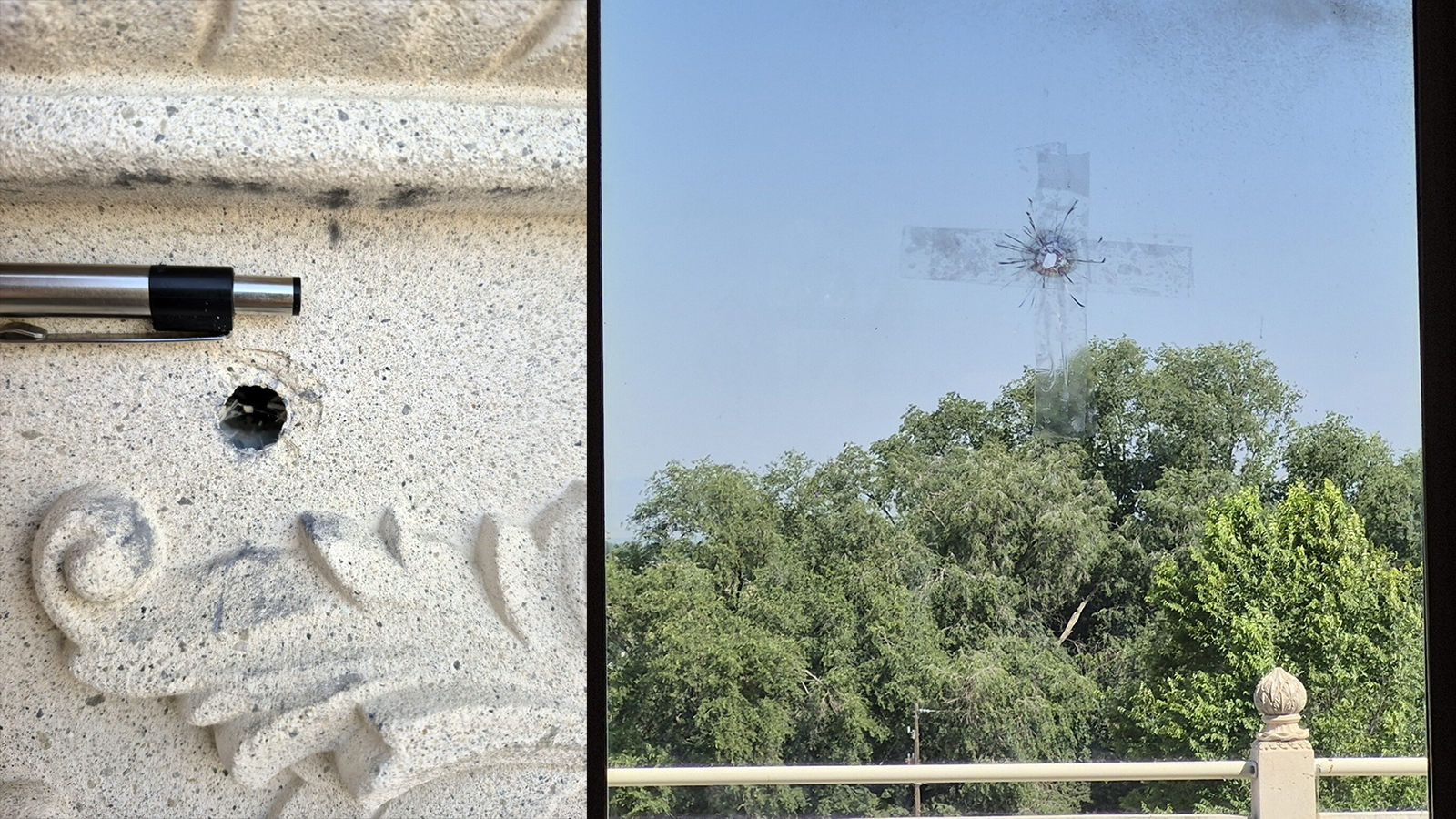
(RNS) — In the heart of Mormon Utah, a Hare Krishna temple has stood as a beloved cultural landmark for more than three decades. Tens of thousands of locals flock to the ISKCON Sri Sri Radha Krishna Temple in Spanish Fork each spring for its annual Holi color festival, and children from diverse backgrounds enjoy field trips to the 15-acre property — which includes an AM radio station and an animal park with llamas, cows, peacocks and parrots — throughout the year.
“We’re trying to do good and enrich the community pretty much 24 hours a day,” said Caru Das Adhikari, the temple’s founder and head priest, who once distributed copies of the Bhagavad Gita, a Hindu scripture, in the 1970s on the campus of Brigham Young University, the flagship university of The Church of Jesus Christ of Latter-day Saints.
But over the past month, three attacks on the temple’s building have left Utah’s Hare Krishna devotees concerned about the presence of hatred amid their otherwise peaceful coexistence.
On June 18, Adhikari’s wife and temple co-founder, Vaibhavi Warden, heard a loud noise and observed smoke coming from the temple’s radio station roof. The next day, several bullet holes were discovered on various parts of the temple’s main structure, including on its hand-carved arches and through a second-story window that opens into the main worship hall.
More gunfire followed later that night, and again on June 20, based on security footage reviewed by temple staff. No one was injured in the attacks.
About 20 shell casings were recovered by Utah County police, who said in a statement that the shots were likely fired from over 100 yards away. Surveillance video from the three days captured a pickup truck approaching the temple grounds, stopping near its fence and someone opening fire from the vehicle before speeding away.

The ISKCON Sri Sri Radha Krishna Temple near Spanish Fork, Utah. (Photo by Ken Lund/Flickr/Creative Commons)
Though the assailants were not able to get through the temple’s electronic gate and onto the property itself, Adhikari said, “God knows what they would have done if they had been able to do that.”
Repairs are estimated to be in the thousands of dollars, he said, and if the main dome was punctured, there is a chance the whole building could experience water pipe damage.
“I’m a missionary, you know. I’ve been at this for 54 years, so nothing really surprises me or deters me,” he said. “But there’s such an atmosphere of hatred in the country now. Ignorance is more prized than knowledge and discretion.”
For years, the International Society of Krishna Consciousness, or ISKCON, and The Church of Jesus Christ of Latter-day Saints have established a positive relationship in the state, with members of both faiths participating freely in each other’s religious celebrations. ISKCON devotees, who worship Lord Krishna as the Supreme God, are known throughout the world for their energetic kirtans, or chants, vegetarian food distribution programs and eco-friendly initiatives.
Yet a few “nasty Facebook comments” here and there have indicated to Adhikari that there’s a “corps of people who would rather we not be here,” adding that he believes it is “not religious or church people” who carried out the attack.
Adhikari said he hopes the perpetrators will be found and charged with a hate crime or domestic terrorism.
The Utah County Sheriff’s Department said it has not ruled out the possibility of the attack being motivated by hate and is asking the public to come forward with any information.
“I don’t think it is vandalism, and I also don’t think it’s just random teenagers, because they came back on two successive nights,” Adhikari said. “I think it’s something more sinister. To call it vandalism is a disservice.”
After the incidents, temple leaders have added new lighting, security cameras, taller fencing and overnight patrols. Hindu temples across the country have similarly ramped up security measures due to an influx of vandalism incidents over last year, heightening the minority community’s concerns about anti-Hindu violence in the United States.
“The atmosphere in the country is not a healthy one,” Adhikari said. “Life is about rising up to the next level, not sinking down to the lowest. It may take a little effort, little culture, a little humility. But with portions of each of those, you can enrich and improve your life rather than slip into degradation.”
